Overall
- Very slabby. Including slab lay-backing
- Runout
Gear
- #0.3-2 with doubles to 0.75
Logistics
- All bolted belays
Approach
Continue past this first crack and go up the ramp to the right. You’ll end up on a trail and be a few minutes away from the start of the route.
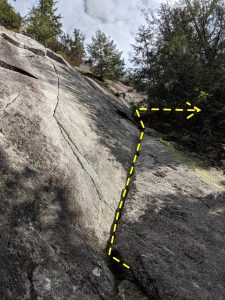
P1 – 5.7, 55m
Begin up a low-angle slab to a horizontal break with a tree. Make a few face moves to a left-angling crack system and follow it up before making a slightly downward traverse across a small face as the cracks end. Follow a second crack system to an anchor on a ledge.
“Assume no gear. Only one place to really put gear in 55m that will guarantee a hold. Horizontal crack. The slight down-climb is the sketchiest part of all. Prepare to meet Jesus if you slip up”
P2 – 5.6, 15m
Climb a short distance above the ledge and make a slabby unprotected traverse across the face to the left. This unprotected pitch is hardest at the beginning, then eases before reaching an anchor on a good ledge.
Can link with P3 with a 60m rope.

Slabby start of P2 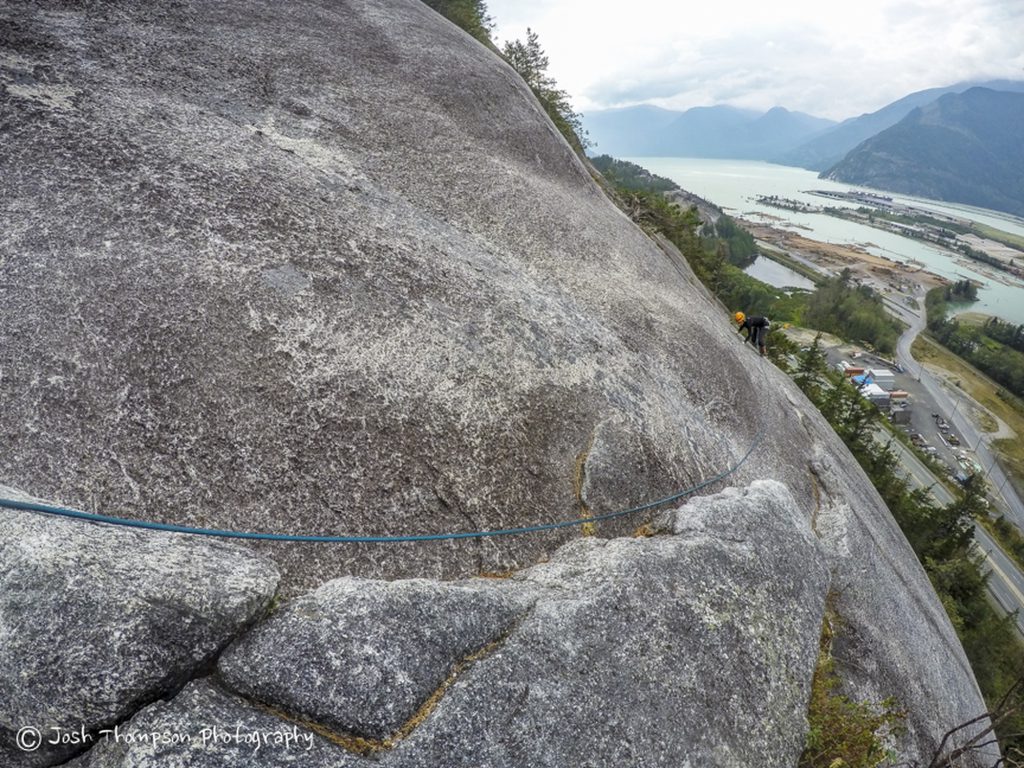
Traverse
P3 – 5.8, 45m
Layback and smear your way up the corner, making a move over a small step partway up. End at a semi-hanging belay.
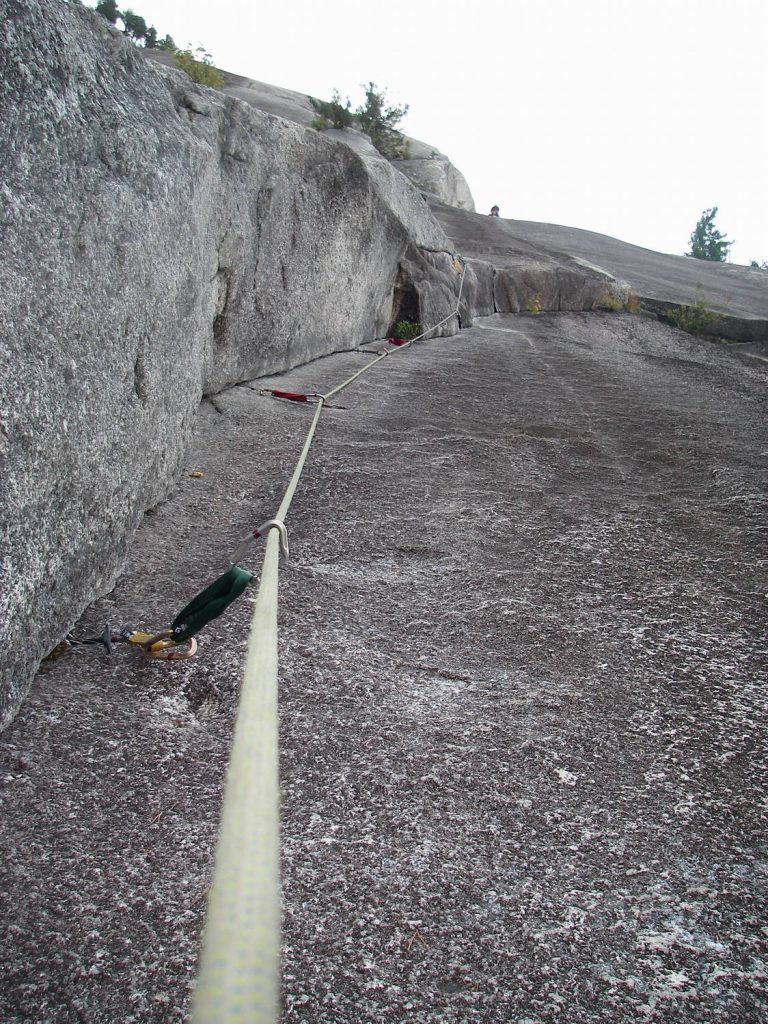
Start of P3 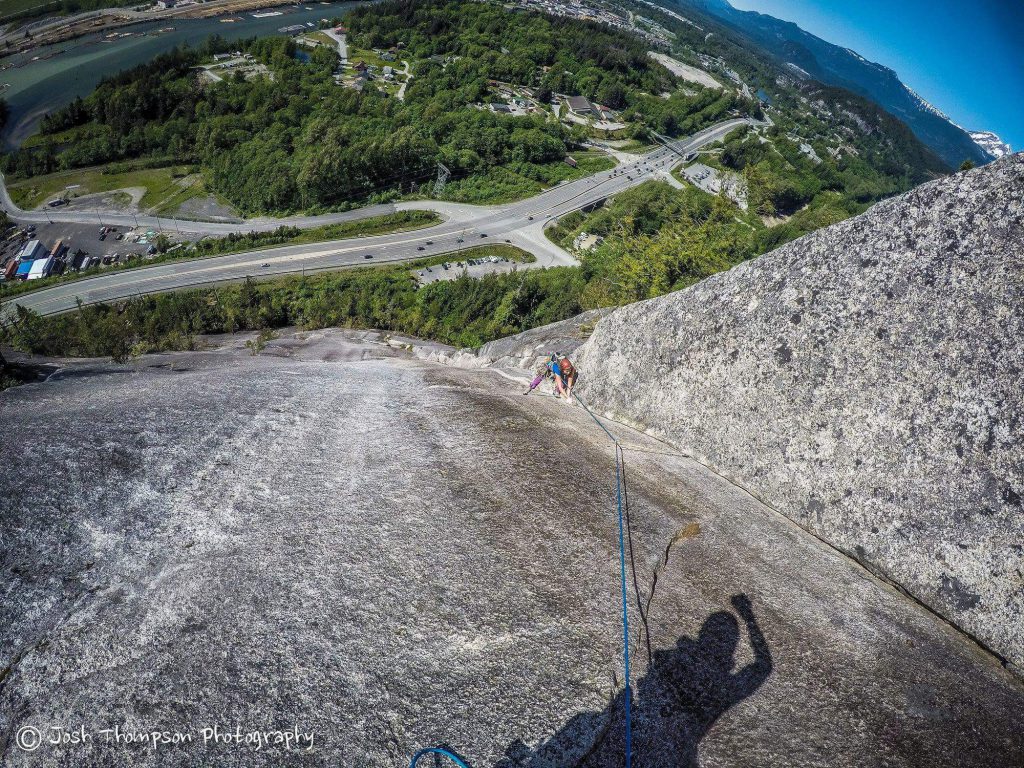
P4 – 5.8, 50m
Continue up the obvious corner. Ignore the incipient calf cramp.
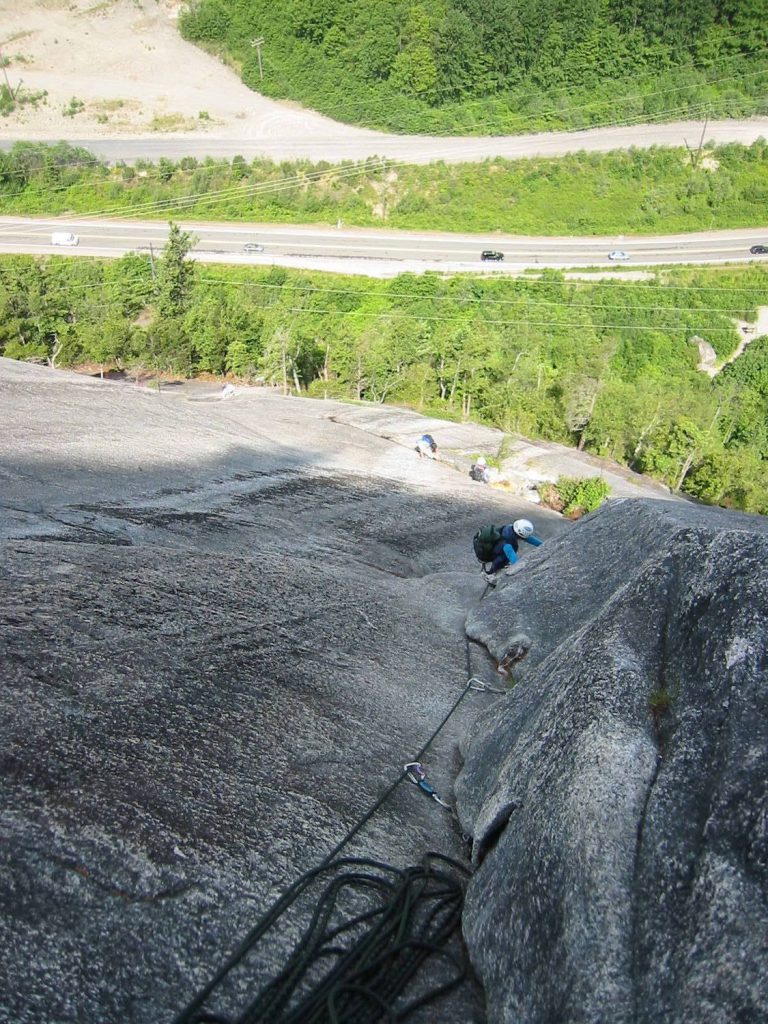
End of P4
P5 – 5.7, 50m
The climbing eases somewhat as the angle of the dihedral lessens. Belay at a nice ledge.
P6 – 5.8, 40m
The crack in the dihedral becomes a small seam and disappears just as the angle of the wall becomes most forgiving. Smear and stem your way up to Broadway, overcoming a tricky bulge onto the ledge. The gear on this pitch is notably small and fairly run-out. The final move is easy to protect.
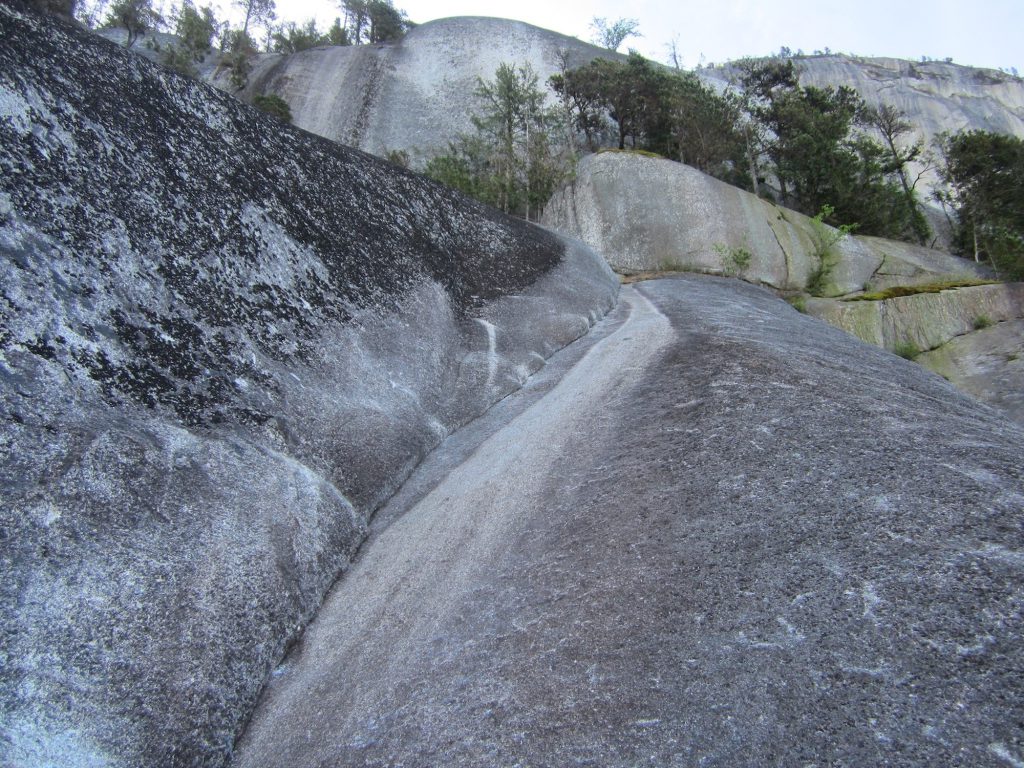
Pitch 6 of Diedre 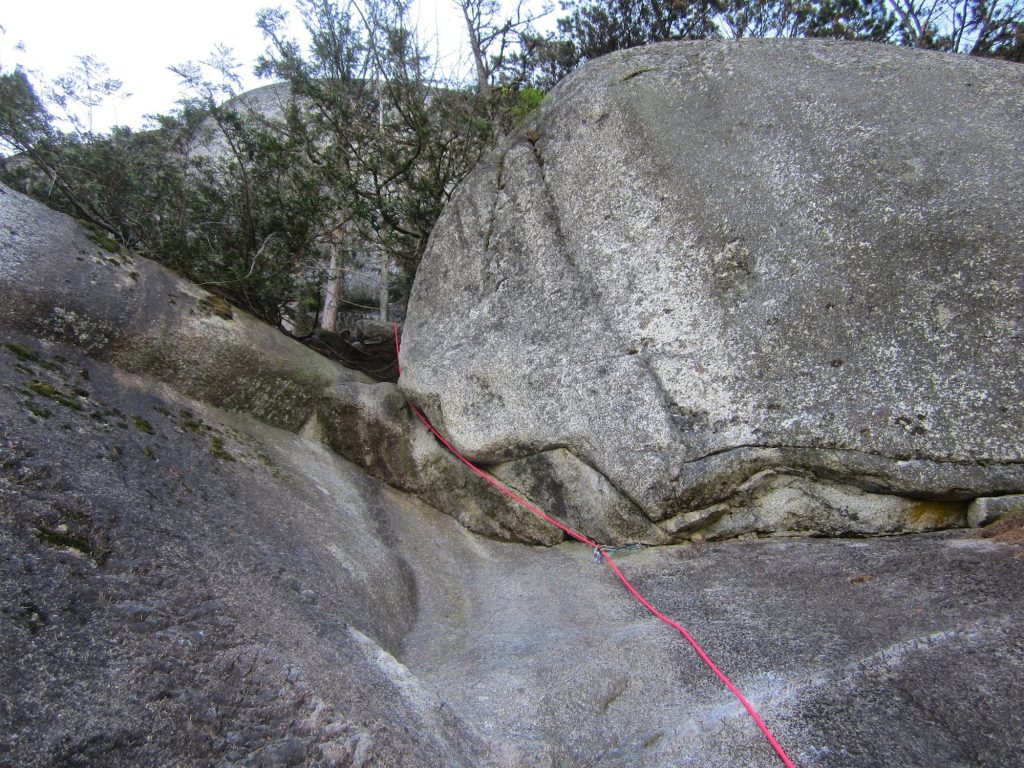
Tricky bulge
